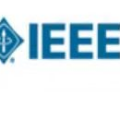Graph representation learning (GRL) is critical for graph-structured data analysis. However, most of the existing graph neural networks (GNNs) heavily rely on labeling information, which is normally expensive to obtain in the real world. Existing unsupervised GRL methods suffer from certain limitations, such as the heavy reliance on monotone contrastiveness and limited scalability. To overcome the aforementioned problems, in light of the recent advancements in graph contrastive learning, we introduce a novel self-supervised graph representation learning algorithm via Graph Contrastive Adjusted Zooming, namely G-Zoom, to learn node representations by leveraging the proposed adjusted zooming scheme. Specifically, this mechanism enables G-Zoom to explore and extract self-supervision signals from a graph from multiple scales: micro (i.e., node-level), meso (i.e., neighbourhood-level), and macro (i.e., subgraph-level). Firstly, we generate two augmented views of the input graph via two different graph augmentations. Then, we establish three different contrastiveness on the above three scales progressively, from node, neighbouring, to subgraph level, where we maximize the agreement between graph representations across scales. While we can extract valuable clues from a given graph on the micro and macro perspectives, the neighbourhood-level contrastiveness offers G-Zoom the capability of a customizable option based on our adjusted zooming scheme to manually choose an optimal viewpoint that lies between the micro and macro perspectives to better understand the graph data. Additionally, to make our model scalable to large graphs, we employ a parallel graph diffusion approach to decouple model training from the graph size. We have conducted extensive experiments on real-world datasets, and the results demonstrate that our proposed model outperforms state-of-the-art methods consistently.
翻译:图形结构化的数据分析非常关键 。 然而, 大部分现有的图形神经网络( GNNS) 严重依赖标签信息, 而在现实世界中通常要花费昂贵的标签信息。 现有的未经监督的 GRL 方法存在某些局限性, 例如高度依赖单色对比度和可缩缩放性。 鉴于图表对比性学习的最新进展, 要克服上述问题, 我们引入了一个新颖的自我监督的图形表达式学习算法, 通过图形对比调整的缩放, 即 G- Zoom, 通过利用拟议调整的缩放计划来学习节点表达。 具体地说, 这个机制使G- Zom 能够探索和从多个比例的图中提取自我监督的图像信号: 微观( 即, 诺德一级) 、 介质( 度) 以及 宏观( i.e. 地平面模型级) 。 首先, 我们通过两个不同的图表显示两种最佳的输入图表 。 然后, 我们在三个比例级的图像上建立三种不同的对比度,, 我们从一个比例级的缩缩缩缩缩缩图, 显示, 显示, 从我们从一个基的缩缩缩缩缩的缩的缩的缩图, 显示到显示, 显示, 从我们从我们从一个 的缩的缩的缩的缩的缩略图, 显示到显示到显示, 显示, 显示一个显示一个显示到大的缩进的缩的缩的缩缩的缩的缩的缩的缩的缩的缩的缩的缩的缩的缩图 。



